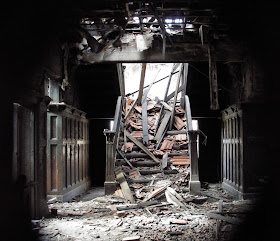A recently announced successful grant, will restore the grave of
General Sir Cyril Bingham Brudenell White, KCB, KCMG, KCVO, DSO at Buangor.
The government has announced funding under the Anzac Centenary Local Grants Program which assists communities undertake Anzac Centenary projects commemorating the service and sacrifice of Australian servicemen and women in the First World War
Cyril Bingham Brudenell White was born September 23 1876 in St Arnaud and grew up on pastoral stations in Queensland. He went to school in Brisbane and at sixteen he started work as a clerk at the Australian Joint Stock Bank in Brisbane.
In 1897 he was a commissioned as an officer in the Royal Australian Artillery and during the Boer War went to South Africa with the Australian Commonwealth Light Horse in 1902. In 1905 he married Ethel Davidson and attended the British Army Staff College in England.
He returned to Australia in early 1908 and at the outbreak of WWI was appointed Lieutenant Colonel and Chief of Staff of the 1st Australian Division, AIF.
Lieutenant Colonel White landed at Gallipoli on April 25 1915. In October 1915 he was given the task of planning the withdrawal of the ANZAC forces from Gallipoli. It was White's organisational skills that saw the withdrawal was conducted without loss. Read more in ‘The silence ruse : escape fromGallipoli ; a record and memories of the life of General Sir Brudenell White’ byRosemary Derham.
From March 1916 until May 1918 he continued as a staff officer under General Birdwood in France and Belgium and was widely regarded as the man who truly ran the AIF. In May 1918, when General Birdwood was promoted to command the British Fifth Army, White accompanied Birdwood as his Chief of Staff, and Monash was appointed to command the Australian division (General Haig had suggested White should be given the command, but he declined).
After the armistice in November 1918, White was appointed to preside over the Demobilisation and Repatriation Branch in London. He was first knighted in 1919, and returned to Australia in 1920 and was appointed Chief of the General Staff.
He retired from military service in 1923 and took up the positions with the Commonwealth Public Board, then with the New Zealand Loan and Mercantile Agency.
He purchased ‘Woodnaggerak’ at Middle Creek followed by ‘Challicum’ near Buangor.
In March 1940, White was recalled to active duty as a full general and reappointed as Chief of the General Staff .
 |
| Insiginia recovered from the crash |
In one of the worst air crashes in Australia, on August 13 1940, General White was flying in an Australian Air Force aircraft from Melbourne when the aircraft crashed as it approached the aerodrome at Canberra, killing White and 9 others on board instantly. Others killed included Brigadier Geoffrey Austin Street, Minister for the Army, and Member for Corangamite, James Fairbairn, Minister for Air and Civil Aviation, and Member for Flinders, and Sir Henry Gullett, Vice-President of the Executive Council. The story of the crash and its effect on the Australian government is in ‘Air disaster - Canberra : the plane crash that destroyed a government’ by AndrewTink.
 |
| The funeral procession down St Kilda Rd |
His funeral was held at St Paul’s Cathedral in Melbourne, then returned soldiers from the Ararat and Beaufort areas preceded the hearse and a cortege of about 150 cars when he was buried in the Buangor Cemetery.His wife Ethel was buried there in 1975.

.JPG)





.JPG)

.JPG)
.JPG)


.JPG)






.JPG)
.JPG)
.JPG)
.JPG)

 Walter Zumstein was born in Melbourne in 1885, of Swiss ancestry, about 1906 he came to the Grampians as a bee-keeper for W. Barnes of honey
fame. Leaving Barnes, he took his bees in a wheelbarrow as far up the MacKenzie Creek as he could manage (the Shanty Crossing site) where he built a cottage and hives.
Walter Zumstein was born in Melbourne in 1885, of Swiss ancestry, about 1906 he came to the Grampians as a bee-keeper for W. Barnes of honey
fame. Leaving Barnes, he took his bees in a wheelbarrow as far up the MacKenzie Creek as he could manage (the Shanty Crossing site) where he built a cottage and hives. At the outbreak of World War I, Walter enlisted in the 5th Battalion and was in Scotland when he met his future wife Jean, they married in 1916 and returned to the Grampians in 1919. They had one daughter Jeannie, who moved to America. Walter died after a long illness in the Wimmera Base Hospital in 1963. His body was cremated and the ashes scattered at the back of their cottage.
At the outbreak of World War I, Walter enlisted in the 5th Battalion and was in Scotland when he met his future wife Jean, they married in 1916 and returned to the Grampians in 1919. They had one daughter Jeannie, who moved to America. Walter died after a long illness in the Wimmera Base Hospital in 1963. His body was cremated and the ashes scattered at the back of their cottage.




